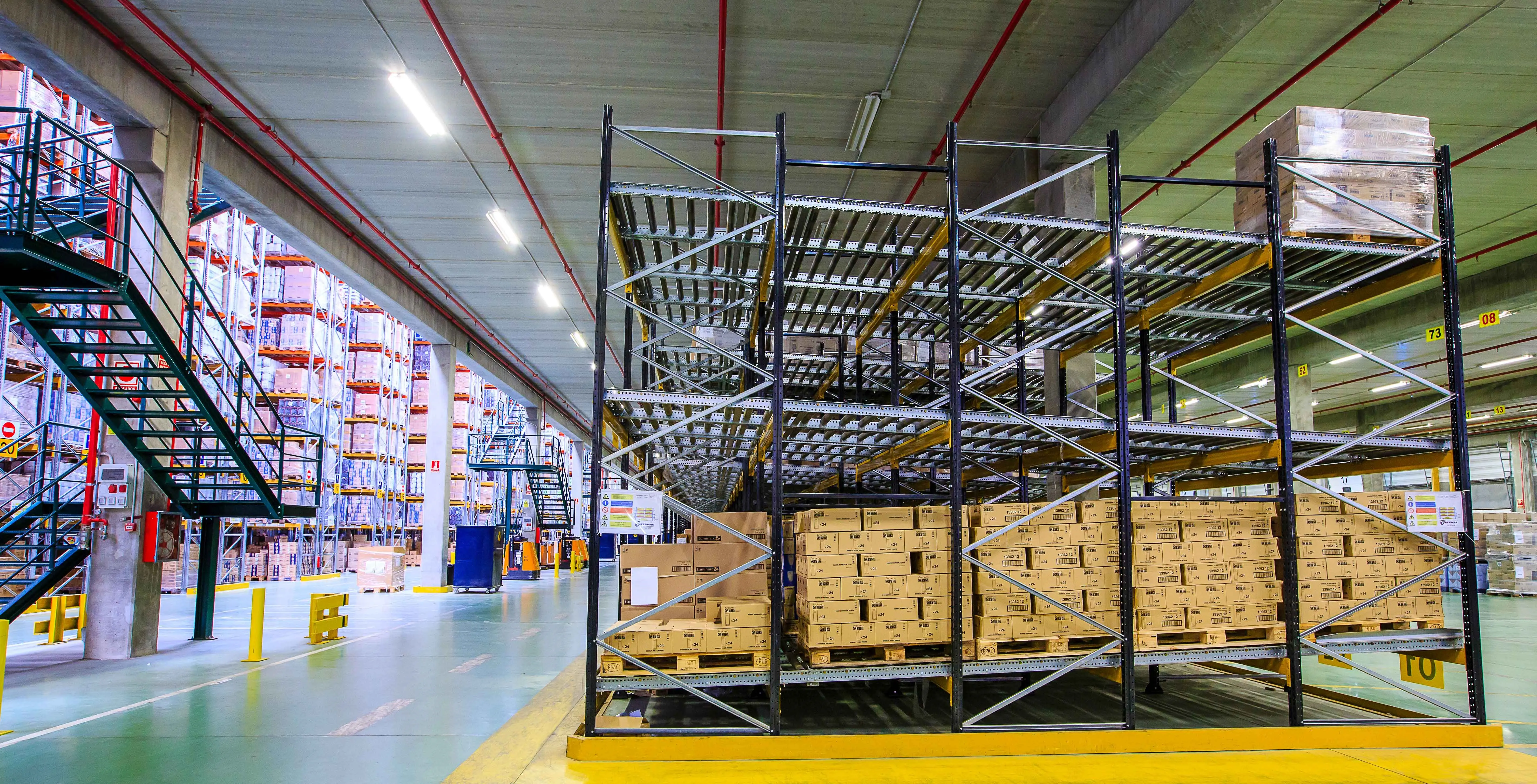Do you know which racking systems allow you to work in FIFO or LIFO mode?

Practically any racking system can be designed to work in FIFO or LIFO mode. However, there are certain solutions that facilitate warehouse management working with these methods. The choice of one management system or another will depend on the type of product you need to store, and on your company’s logistics operation.
Pallet live storage
This is the most commonly used system for working in FIFO mode. In live storage configured for this mode, each pallet in travels gently by gravity thanks to the inclined plane of the roller tracks. Loading takes place in one aisle and unloading in the opposite aisle.
This system’s adaptation to LIFO mode, is known as Push Back. Here each pallet in the aisle displaces the pallet above, leaving the last pallet to enter in the first unloading position. In this configuration, each pallet is loaded and unloaded in the same work aisle.
Drive-in/Drive-through racking
It is a compact block storage system that provides maximum compaction. For the same surface, compact racking achieves more storage capacity than the conventional racking system. Its most frequent configuration is in LIFO mode, also known as a drive-in system. In this mode, the goods are loaded and unloaded in the same work aisle. The forklift enters the lane to access or deposit the pallet and retreats.
Although the drive-in system is a LIFO storage solution, it is sometimes used in sectors where it is important to maintain stock rotation due to product shelf life, such as in the food sector. If the goods are homogeneous, in lots, with few references and a large number of pallets, this system can be chosen to maximise use of the space available, as it is a high density warehouse that reduces the number of work corridors compared to conventional racking.
Its configuration in FIFO mode, called drive-though, uses one aisle for loading the goods and another aisle for unloading them. These racks form through-lanes so the forklift can enter through one aisle and leave through the other without having to reverse.
As it is a compact system, whether in FIFO or LIFO mode, it achieves a better storage capacity than with conventional pallet racking. It is in an ideal system if there is a high volume of goods and few references.
Shuttle racking
This is a compact system similar to the drive-in but semi-automated. It is a compact shelving solution in which the load is handled by a shuttle. This shuttle can be programmed to function in either FIFO or LIFO mode.
Shuttle racking is most frequent for LIFO mode, with the same aisle for loading and unloading the goods.
Its configuration in FIFO mode, uses one aisle for loading the goods and another aisle for unloading them. The difference with the drive-in system is that, in this solution, the shuttle enters the racks and the forklift only operates from the corridor. This avoids forklift manoeuvres to enter and leave the aisles. »
Live storage for picking
Carton flow is especially devised to store non-palletized loads usually in boxes or containers, of different sizes and materials. Its configuration in FIFO mode uses two work aisles, where the boxes enter through the highest end of the rack and move to the opposite end over the inclined plane of the roller tracks.
This type of racking for live picking does not tend to work in LIFO mode.
Choosing the right method for managing the goods and adequate racking system will help to reduce logistics costs and achieve improved efficiency in the daily operation of your warehouse.
Solution personnalisée
Si vous ne savez pas quelle solution de stockage convient le mieux à vos besoins, contactez-nous. Nous vous aiderons à configurer votre projet.
